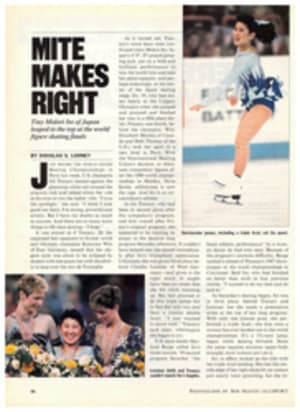
METS MAGIC (OR ANATOMY OF A DE5AL)
Developers trying to lure residents to fancy Florida resort towns have frequently offered championship golf courses, modern medical facilities and plenty of parking for the handicapped. Now they're offering baseball. The Thos. J. White Development Corp. of St. Louis, one of the pioneers in this new game, is using the New York Mets as the cynosure of a community the company is building in Port St. Lucie, a sunbaked town 50 miles north of Palm Beach on the Atlantic Coast.
The project began in 1984 when White paid $17 million for a 4,614-acre tract that was part of a cattle ranch abutting Interstate 95. About the same time, St. Lucie County residents voted to adopt a 2% tourist tax. For every dollar spent on hotels, motels or rentals of six months or less, the county would receive two cents. Officials wanted to use the money to construct a spring-training complex and attract a major league baseball team.
Those prospects intrigued White. He figured that major league baseball would bring priceless publicity to Port St. Lucie. So he proposed a deal. White offered to build a stadium and training facility on a 100-acre parcel of land that he would donate to the county. In return, for 15 years the county would use the tourist tax revenues to maintain the baseball complex and to reimburse White for the cost of its construction. Last year the county collected $350,000 from the tax, and it is expected to bring in close to $1 million per annum by the end of the century. While White probably won't recoup his $11.3 million investment through the tax, the rising value of the adjacent land should pay the company a handsome return.
After approving the plan, the county began working with White to romance a major league team. "We talked to half a dozen clubs," says Stephen Best, director of marketing for St. Lucie West, the name given to the development that will rise in the shadows of the Mets' new spring-training home. "In fact, we were meeting with Marge Schott of the Reds when Mets president Fred Wilpon called in January 1986 and accepted our offer."
And what an offer it was. New York received a large, 7,600-seat stadium, roomy major league and minor league clubhouses, weight and training rooms, 5½ practice fields, enclosed batting cages and enough chain link fencing to keep even the most determined fans from getting near the players. But none of this cost the Mets a dime. All they have to do is shell out about $40,000 a year in rent.
White also gave Wilpon and fellow Mets owner Nelson Doubleday an option on 250 acres of undeveloped property. No one will say what the terms are, but White probably offered the option as a sweetener, enabling Wilpon and Doubleday eventually to buy the land at a very low price. Today those 250 acres are estimated to be worth about $10 million.
White intends to make a little city out of the old ranch. Plans for St. Lucie West include two college campuses, eight schools, shopping malls, golf courses, a hospital, an industrial park and 10 residential villages with 12,000 units. The project should be nearly complete in 15 years, and by then Wilpon's and Doubleday's holdings will undoubtedly be worth a great deal more. About the only thing the Mets paid for were six residential lots on the golf course, on which they plan to build houses for the team's top officials.
Says Mark Weinberg, a vice-president of Thos. J. White, "'The Mets have been our business card for the past two years. They give us identity and credibility. The association will help our development grow, and that's where we make our money." Nothing will come cheaply in the beginning. The company will spend close to $90 million to create St. Lucie West. But that investment should pay huge dividends. "When all is said and done," says Best, "more than $4 billion will have been invested in St. Lucie West."
Those numbers are already bringing other high rollers into the spring-training game. In the future, ball clubs may no longer be content to serve merely as centerpieces for megabuck developments. Spring training does not pay for itself. Even the Mets don't make money on it. Hence, teams probably will start asking for a piece of the action. Partnerships in major developments like St. Lucie West could allow teams to get something out of the exhibition season they never got before—rich.
TWO PHOTOS
RONALD C. MODRA
The Mets and the mailboxes are in place, but the rest of the new city is still to come.
PHOTO
RONALD C. MODRA
The stadium and training complex are worth $11 million but didn't cost the Mets a dime.
PHOTO
RONALD C. MODRA
Although chain link fences keep fans at bay, Doc Gooden can step out to give autographs.

